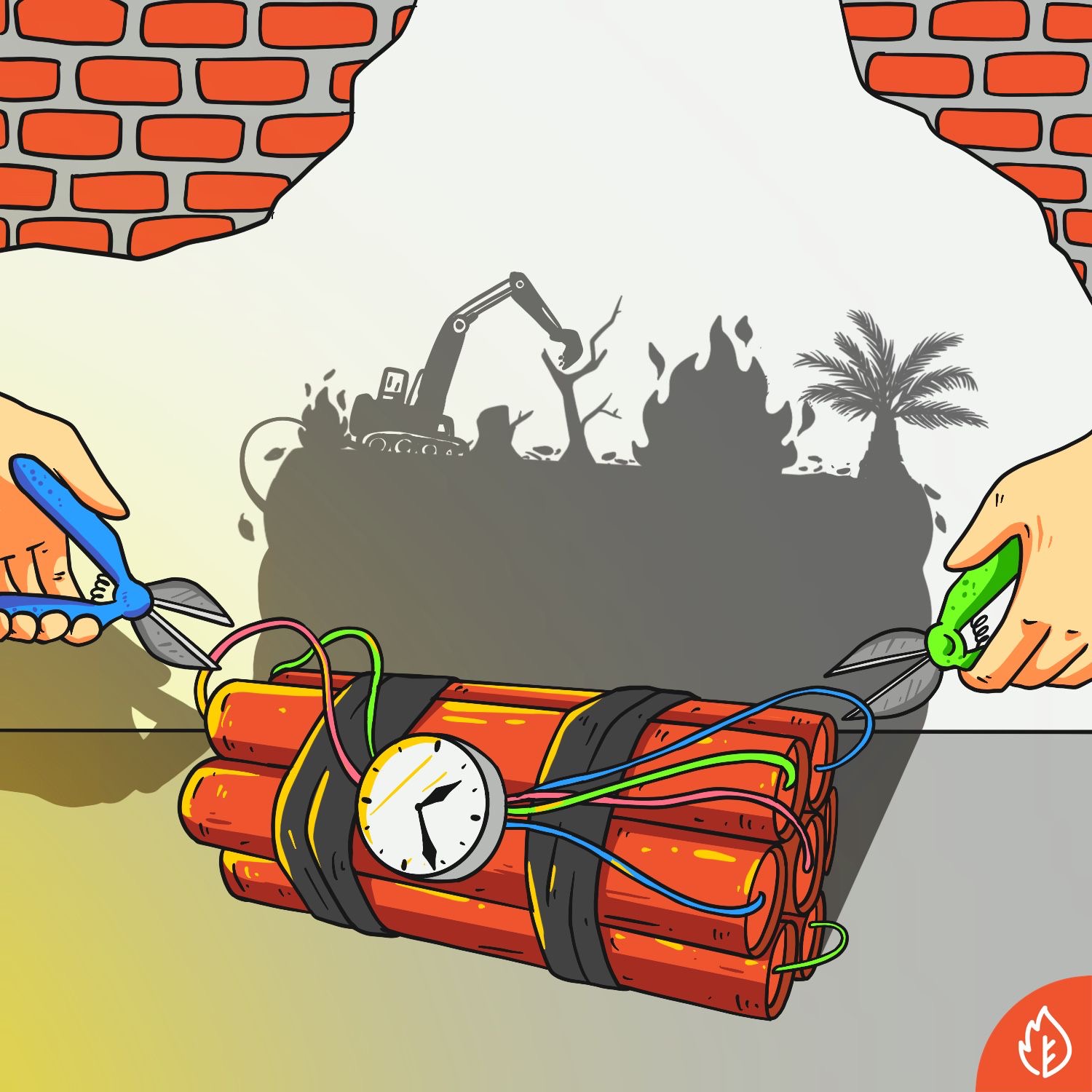Recurring Forest and Land Fires, a Bad Reflection on the Peat Protection Effort
By Hairul Sobri
Peatlands as a Climate Solution and a Ticking Time Bomb

In the name of development, Indonesia's peatlands often fall victim to natural exploitation activities. The conversion of peatlands is driven by economic growth, the benefits of which are unclear. Meanwhile, the availability of productive mineral land in Indonesia continues to dwindle. This fact has led to peatlands being targeted for land expansion, even though, ideally, these areas should remain untouched by human activity.
Peatlands possess unique natural characteristics. As a wetland ecosystem, peatlands have the capacity to store large amounts of water, even more than their dry weight. Once peatlands become dry, it is difficult for them to rehydrate. The dryness experienced by peatlands causes the organic materials within them to become massive fuel when ignited. The carbon reserves stored in peatlands are released, further exacerbating global climate change.
Indonesia should take pride as the owner of the world’s largest tropical peatlands. Unfortunately, Indonesian peatlands fall into the critical category. According to an inventory report by the Ministry of Environment and Forestry (KLHK), 24 million hectares of land, or 84% of the total area of Indonesia’s Peat Hydrological Units (KHG), are in a critical state. The highest level of peatland criticality in Indonesia is found on the islands of Sumatra and Kalimantan, particularly in the provinces of Riau, Jambi, South Sumatra, West Kalimantan, and Central Kalimantan.
Proportion of peatland criticality levels in Indonesia
(Source: Ministry of Environment and Forestry)
The degradation of peatland ecosystems in Indonesia is generally caused by human activities that deliberately dry out peatlands. The motivation behind this is to facilitate the conversion of peatlands into industrial production areas, such as palm oil and acacia plantations. These plants are not peat-friendly and are not resilient to waterlogged conditions and high acidity levels. To enable their growth, the ecosystem must be modified by drying out the land. This process involves creating drainage canals up to 1 meter to more than 5 meters deep to allow the water contained in the peat to flow out. Once dry, extractive plants can thrive because their roots are no longer submerged in peat water. The acidity of the peat, which inhibits plant growth, also decreases. Additionally, dry peat will compact and lose its function as a water reservoir, leading to water runoff to the surrounding areas during heavy rainfall.
Haphazard exploitation and intervention in peatlands can become a ticking time bomb, capable of exploding at any moment and causing disaster to the surrounding ecosystem. When a fire occurs, it is extremely difficult to extinguish due to its spread to the lower layers (ground fire) of the dry peat. Manual firefighting efforts from land and air are ineffective for extinguishing peat fires because only heavy rainfall can fully douse the fire down to the peat surface.
The year 2015 was a dark period for Indonesia due to a disaster that scorched 194,787 hectares of peatland. The El Niño phenomenon exacerbated the already dry peat conditions, causing fires to spread more rapidly. The fires not only release carbon reserves contained in the peat but also trigger the emission of greenhouse gases into the atmosphere, worsening climate change. Additionally, peat fires lead to a reduction in essential nutrients needed by peatland plants, such as nitrogen.
Peat fires also cause peatlands to lose their ability to retain water, leading to increased susceptibility to drought during dry seasons. From a health perspective, thousands of affected individuals suffer from respiratory infections, eye irritation, coughing, and even life-threatening conditions, particularly among vulnerable populations. Researchers from Harvard University have indicated that the forest and land fires in 2015 could result in up to 100,000 premature deaths among communities in Indonesia, Singapore, and Malaysia if no serious measures are taken to address the fires.
The forest and land fires that occurred in Indonesia in 2015 also contributed to national losses estimated at approximately IDR 221 trillion. The thick smoke that enveloped the region disrupted community activities and even led to children losing their right to education as schools were closed while the smoke persisted.
World Day to Combat Desertification and Drought, observed on June 17 each year, should serve as a collective reflection on the need to uphold peatland ecosystem protection. We must ensure that the remaining Indonesian peatlands are not exploited under the guise of investment, economic interests, and development. Additionally, both government and private sector commitments to the restoration of degraded peatland ecosystems must be continuously monitored to achieve the goal of sustainable peatlands. The awareness that damaged peatlands are extremely difficult to restore must be accompanied by an understanding of the need to prevent further degradation.



